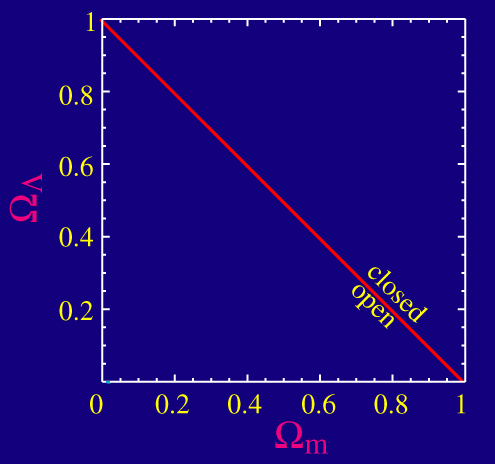Dark Energy
Key Concepts:
-
CMB indicates the total
energy density is close to critical
(flat universe)
-
Many observations indicate that the dark
matter energy density is sub-critical
-
Dark energy is required
to make these statements consistent
-
Amount of dark energy is consistent with that needed
to explain distant supernovae
Why introduce the mysterious
dark energy into the game? Why not just
say that the flatness of the universe implies that the dark matter density
is close to critical?
There is a considerable amount of evidence that the
density
of dark matter is very much less
than critical. The strongest lines of
evidence come from clusters of galaxies:

Tests like those found in measurements of the abundance
and baryon fractions of galaxy clusters only probe energy
components that can cluster with galaxies.
If we want to have a low density of dark matter and still have a flat universe,
one has to postulate a new component of energy that is
spatially smooth and cannot cluster with galaxies.
The simplest example of such a component is Einstein's cosmological
constant ? a remarkable type of energy density
that is constant in both space and time.
The inference of dark energy taking up some 60-80%
of the total energy density is nicely consistent with measurements of the
luminosity distance to high redshift supernovae
(SNe) which indicate the expansion of the universe is accelerating.
These three tests (CMB for flatness, clusters for
the matter density, and SNe for the acceleration) nicely complement
each other and currently indicate that dark
energy not only exists but is the dominant form of energy density in the
universe today. As all of these tests improve in precision, it will
be interesting to see whether consistency with a simple cosmological constant
for the dark energy remains. Changes in the nature of the dark
energy can slightly change the distance CMB photons can travel since recombination
and hence change the interpretation of future more precise measurements
of the acoustic peak positions.

